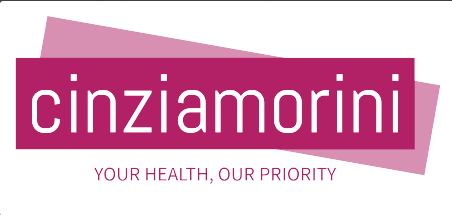
Population health management is evolving at a rapid pace, driven by technological innovation, changing patient expectations, and the growing complexity of healthcare systems. As we approach 2025, healthcare organizations must stay ahead of emerging trends to improve patient outcomes, optimize resource utilization, and deliver value-based care. This article explores the top trends in population health management that are shaping the future of healthcare.
Emphasis on Data-Driven Decision Making
One of the most significant trends in population health management is the increasing reliance on data analytics. Health care management teams are leveraging advanced analytics tools to gain insights into patient populations, identify high-risk individuals, and predict health outcomes. By analyzing electronic health records, claims data, and social determinants of health, providers can implement proactive interventions that prevent complications and reduce hospital readmissions.
Predictive analytics is particularly transformative. Healthcare partners medical group and other organizations are using these tools to identify patterns that signal emerging health issues before they become critical. This proactive approach allows care teams to focus on preventive measures, personalized treatment plans, and early interventions that improve patient outcomes while controlling costs.
Integration of Social Determinants of Health
Population health management is no longer limited to clinical care. Social determinants of health, such as housing, education, employment, and access to nutritious food, are increasingly recognized as critical factors influencing health outcomes. Organizations are incorporating these determinants into their care strategies, ensuring that interventions address both medical and social needs.
Healthcare partners medical group has highlighted the importance of community partnerships in addressing social determinants. Collaborating with local organizations allows healthcare providers to connect patients with essential resources, from transportation to mental health support, improving overall well-being and reducing disparities in care.
Growth of Value-Based Care Models
The shift from fee-for-service to value-based care is another major trend shaping population health management. In value-based models, healthcare providers are incentivized to deliver high-quality, cost-effective care rather than simply increasing the volume of services. This approach encourages care coordination, preventive interventions, and patient engagement, all of which are essential for effective population health management.
Health care management strategies increasingly focus on measuring outcomes and patient satisfaction to ensure that care delivery aligns with value-based goals. By prioritizing outcomes over procedures, providers can enhance efficiency and improve patient experiences while reducing unnecessary costs.
Expansion of Telehealth and Remote Monitoring
Telehealth and remote patient monitoring have transformed how healthcare is delivered, particularly in managing chronic conditions. Patients can now access care from their homes, reducing barriers such as transportation or mobility challenges. Remote monitoring devices allow providers to track vital signs, medication adherence, and lifestyle factors in real time, enabling timely interventions.
Healthcare partners medical group and other leading organizations are integrating telehealth into population health strategies to maintain continuous patient engagement. By combining virtual care with traditional in-person services, providers can offer a more holistic and accessible approach to healthcare, particularly for rural and underserved populations.
Personalized Care Through Artificial Intelligence
Artificial intelligence is making personalized medicine a reality. AI algorithms can analyze vast amounts of data to provide individualized treatment recommendations based on a patient’s medical history, genetics, and lifestyle. This level of personalization enhances the effectiveness of care plans and improves patient satisfaction.
In population health management, AI helps identify at-risk patients, optimize care pathways, and predict potential complications. Health care management teams are increasingly incorporating AI into clinical decision support systems to ensure that interventions are evidence-based and tailored to individual patient needs.
Focus on Patient Engagement and Education
Patient engagement remains a cornerstone of successful population health management. Empowering patients to take an active role in their healthcare leads to better adherence to treatment plans, improved health outcomes, and higher satisfaction rates.
Healthcare organizations are adopting innovative strategies to educate and engage patients. Mobile apps, wearable devices, and interactive health platforms provide patients with personalized information, reminders, and feedback. Healthcare partners medical group emphasizes the importance of patient education in managing chronic conditions, promoting preventive care, and fostering long-term wellness.
Collaboration Among Healthcare Providers
Population health management requires seamless collaboration among various healthcare providers, including primary care physicians, specialists, and care coordinators. Integrated care models ensure that patients receive consistent, coordinated care across different settings, reducing fragmentation and improving outcomes.
Health care management teams are investing in shared platforms, communication tools, and collaborative workflows that facilitate real-time information exchange. This collaborative approach enables timely interventions, better resource allocation, and a more comprehensive understanding of patient needs.
Emphasis on Mental Health and Wellness
Mental health is increasingly recognized as an integral part of population health management. Providers are focusing on early detection, intervention, and integrated care models that address both physical and mental well-being.
Organizations are implementing screening programs, counseling services, and wellness initiatives to support mental health. Healthcare partners medical group emphasizes holistic care strategies that consider the psychological and emotional aspects of patient health, recognizing that mental well-being significantly impacts overall outcomes.
Leveraging Blockchain for Health Data Security
As healthcare systems become more digital, securing patient data is a top priority. Blockchain technology offers a promising solution by providing a secure, decentralized, and transparent method for storing and sharing health information.
Health care management teams are exploring blockchain applications to protect patient data, ensure interoperability, and maintain data integrity. By enhancing security, providers can build trust with patients while facilitating efficient and safe data exchange across organizations.
Preparing for Future Challenges
The trends shaping population health management for 2025 highlight the importance of adaptability, innovation, and collaboration. Healthcare organizations must embrace technology, prioritize preventive care, and foster patient engagement to achieve meaningful outcomes.
Healthcare partners medical group serves as an example of how integrating data-driven strategies, personalized care, and social determinant interventions can lead to measurable improvements in population health. As the healthcare landscape evolves, staying informed about these trends will be crucial for organizations seeking to deliver high-quality, sustainable care.
Population health management in 2025 is marked by a convergence of technology, personalized care, and collaborative strategies. From data-driven decision-making and AI-powered insights to value-based care models and telehealth expansion, the focus is on improving outcomes, reducing disparities, and enhancing patient experiences. Health care management strategies that prioritize integration, patient engagement, and holistic care will define the future of healthcare. By embracing these trends, organizations can not only improve population health but also ensure that care delivery is efficient, accessible, and sustainable.
